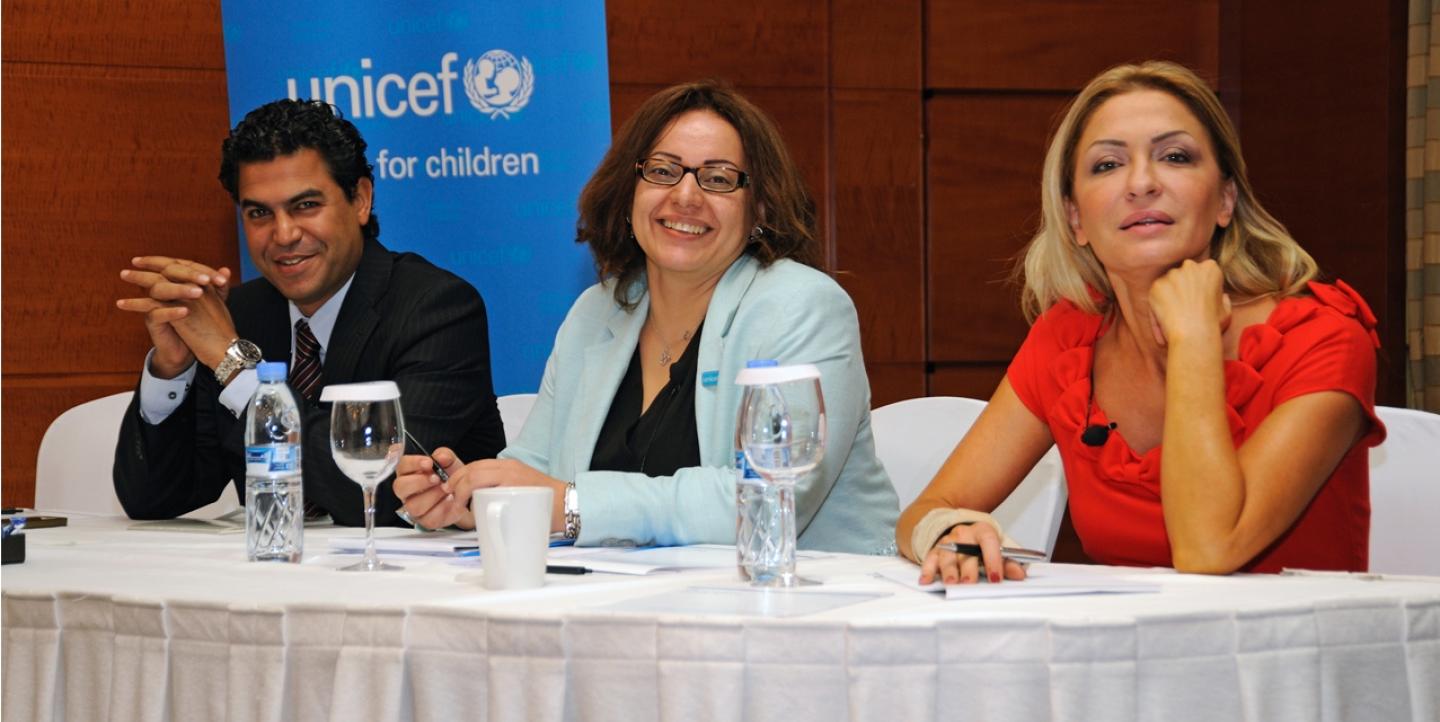Revolutions in the Middle East have been powered by young people using new technology.
Young people, who make up 30 percent of the region’s population, have played a dominant role in protests and political upheaval by documenting events with cell phones, the Internet and social media.
“Children and young people have been at the heart of the Arab Spring. They play a key role in instigating it, using the power of social media to rally their peers and mobilize support,” said Shahida Azfar, UNICEF Regional Director for MENA. “But they have also been among its first victims.”
For example, the lack of access to information from Syria has forced the media to depend on photos taken by ordinary citizens and amateur recording of bloodshed in obscure neighborhoods and streets.
Many children also continue to be caught in the crossfire. At UNICEF’s annual Middle East and North Africa (MENA) Regional Media Forum, Khaled Ezz Al Arab of the BBC and Najwa Kassim of Al Arabiya spoke about child protesters in Egypt, Syria, Yemen and Bahrain.
When Sayed Ahmad Sayed, a 14-year-old boy, was shot in Bahrain, graphic videos - many taken by cellphones - revealed his bludgeoned head. The photos and videos were disseminated and large photos of the boy were paraded in one of the largest street protests. His friends made YouTube videos and disseminated them before and after the protests.
By using cellphones and the Internet, Ezz Al Arab said youth also feel empowered. “Young people including children are now demanding better education, better teachers, better treatment from the government and reform that affects their lives especially in education, equality as well as transparency,” he explained.
Besides the direct risk to their safety, street children in Egypt have been the most vulnerable, despite several stories and media coverage in the international press. Many of these children lived for several weeks in the streets and were exposed to violence.
“If we look at the media landscape, we realize how social media embarrasses traditional media and the official press,” said Octavia Nasr who spoke at the conference. “Issues that the media care about are war, bombings and similar events because there are deaths and wounded victims but the media are really built on the moment."
The power of social media extends not only to political issues and revolutions but fundamental social issues like education and health. When a YouTube video of a Jordanian student being verbally abused by his teacher was disseminated by social networking sites, the Jordanian public expressed outrage and demanded action be taken against the teacher. According to AmmanNet, the former Minister of Education apologized to the student and announced that the teacher will be penalized.
“This kid was fortunate enough to have had this video aired online, and to garner enough attention from up top to start a search that would lead in finding him and his teacher,” wrote Naseem Tarawneh, a Jordanian blogger. “This incident spawned a seemingly endless discussion about education reform in this country, specifically on Twitter and the #ReformJO hashtag.”
Protests continue to take place across the region including in places like Syria where it remains extremely difficult to verify numbers and victims, but certainly without citizens participating in the dissemination of information and often young people putting their lives on the line to tell their stories to the world, we would remain even more in the dark.

